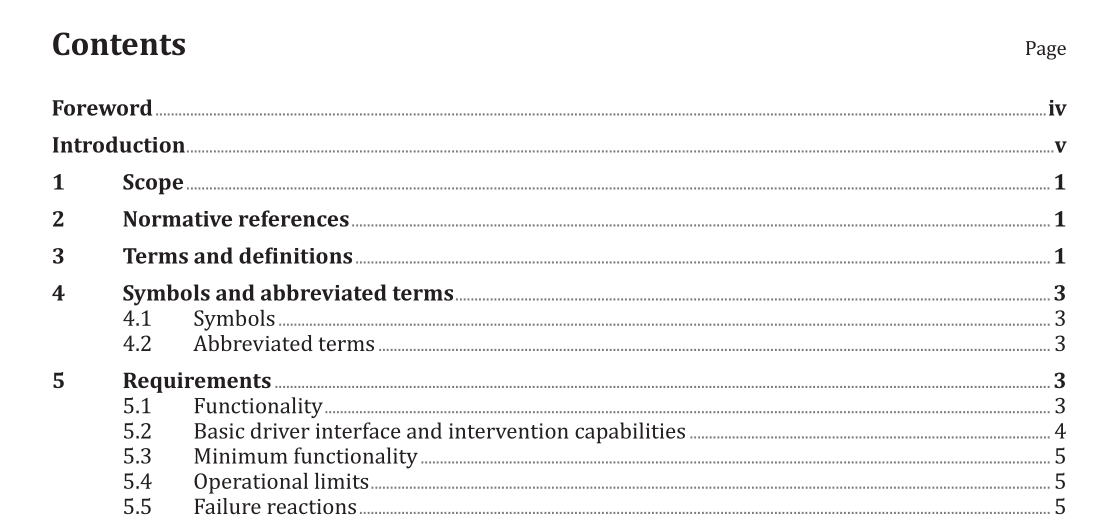ISO 11270:2014 pdf download.Intelligent transport systems — Lane keeping assistance systems (LKAS) — Performance requirements and test procedures
1 Scope
This International Standard contains the basic control strategy, minimum functionality requirements, basic driver interface elements, minimum requirements for diagnostics and reaction to failure, and performance test procedures for Lane Keeping Assistance Systems (LKAS). LKAS provide support for safe lane keeping operations by drivers and do not perform automatic driving nor prevent possible lane departures. The responsibility for the safe operation of the vehicle always remains with the driver. LKAS is intended to operate on highways and equivalent roads. LKAS consist of means for recognizing the location of the vehicle inside its lane and means for influencing lateral vehicle movement. LKAS should react consistently with the driver expectations with respect to the visible lane markings. The support at roadway sections having temporary or irregular lane markings (such as roadwork zones) is not within the scope of this International Standard. This International Standard is applicable to passenger cars, commercial vehicles, and buses.
LKAS provides support for safe lane keeping operations by drivers and do not perform automatic driving nor prevent possible lane departures. The responsibility for the safe operation of the vehicle always remains with the driver. LKAS shall, as a minimum, provide the following operations and state transitions. The following constitutes the fundamental behaviour of LKAS.
— The transition from LKAS off to LKAS on can be performed by the driver or automatically, e.g. after the ignition is switched on and no system failure has occurred. The transition from LKAS on to LKAS off can be performed by the driver or automatically, for instance after the ignition is switched off or a system failure has occurred.
— LKAS shall be operational for speeds between vmin and vmax. vmin = 20 m/s, vmax = 30 m/s, or the maximum possible vehicle speed, whichever is less. It is allowed to be operational in a wider speed range.
— In LKAS stand-by state, the system shall evaluate the activation criteria. LKAS shall not perform any lane keeping actions. One of the activation criteria shall be that the system has determined the position of the vehicle within the lane relative to the visible lane markings of its own lane. It is up to the manufacturer to decide whether it is necessary to detect one or both visible lane markings of the own lane. Other criteria to be selected by the manufacturer can be the type of the lane marking (e.g. solid or dashed), a minimum vehicle speed, driver actions, steering angle, and other vehicle conditions. If all of the selected activation criteria are met, the system shall transition from LKAS stand-by to LKAS active state. This transition can be done automatically or by a driver confirmation.
ISO 11270:2014 pdf download
